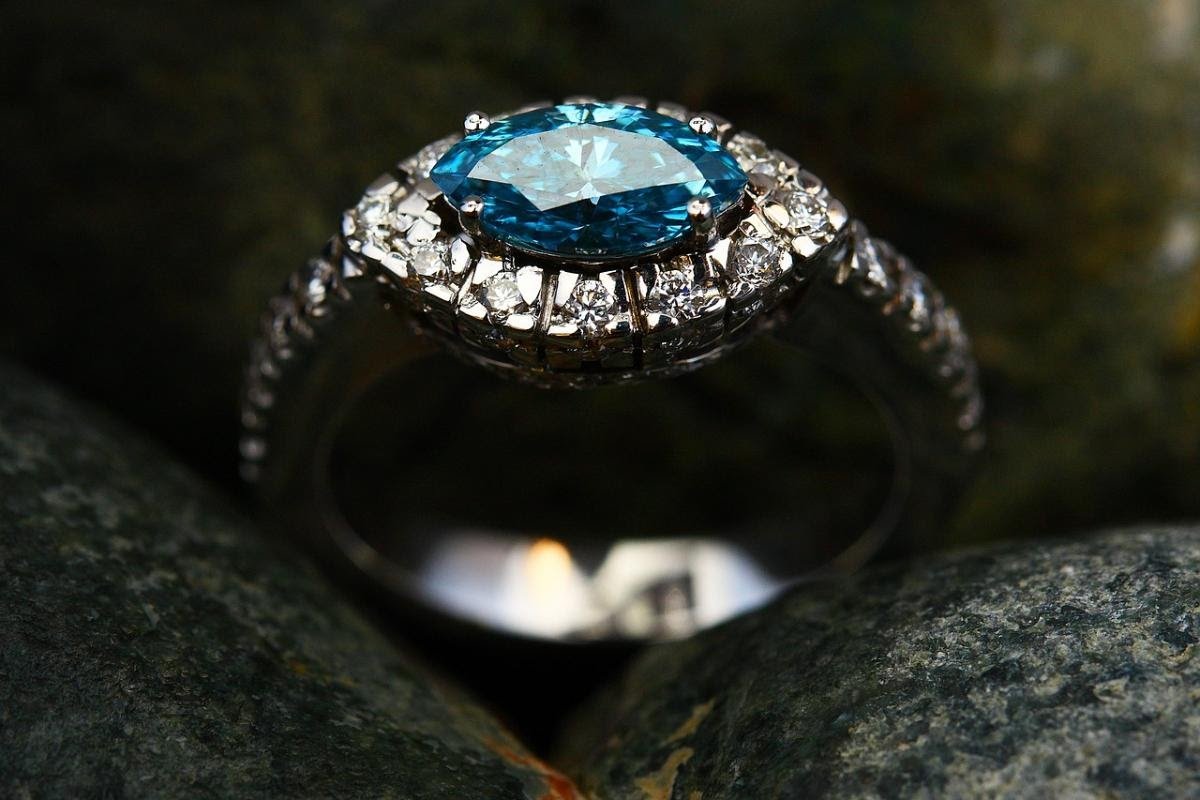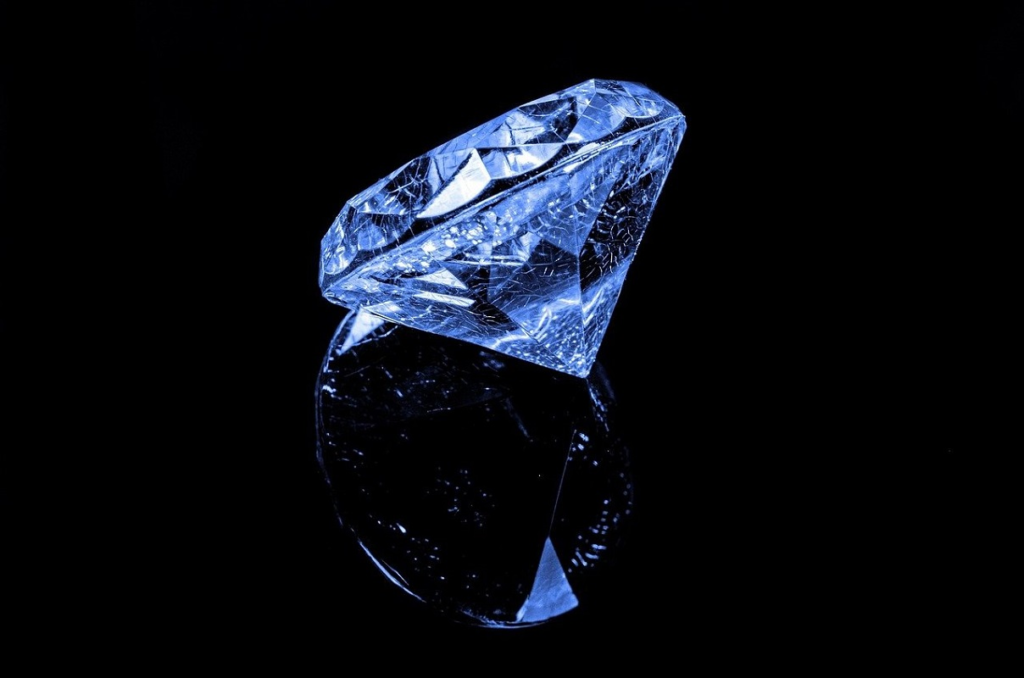Everyone admires the beauty of diamonds and awes by their strength. Although diamonds may appear similar to one another, every cut is as unique as it could get.
One aspect of diamonds that continues to serve as a spectacle to people or even affect a buyer’s decision is diamond fluorescence. If you are one of those who wonders what fluorescence is and how it impacts the overall value of diamonds, this guide is for you.
Diamond Fluorescence: What Is It?
Diamonds are known for their jaw-dropping sparkle. However, unknown to many, diamonds shine differently under ultraviolet (UV) light. To put it simply, diamond fluorescence is the glow you see when diamonds are exposed to light sources, such as sunlight, UV lamps, and fluorescent lights.
Once a diamond is taken away from the light source, fluorescence immediately stops. The naked eye cannot observe diamond fluorescence. With diamond fluorescence, you’ll discover that depending on the type of diamond, one may see shades of blue, green, red, white, or yellow.
Plus, there’s an intensity and strength that the Gemological Institute of America assesses. People who want to purchase diamonds must know the degree of diamond fluorescence as color grades affect the final appearance and sale price.
Degrees of Diamond Fluorescence: What Causes It?
What causes diamond fluorescence? Diamonds are a precious stone that is created through the Earth’s natural ground activity. As such, elements like aluminum, boron, and nitrogen can be present in a stone, all of which react to the UV light sources.
For a more scientific explanation, the electrons present in aluminum traces, boron, and nitrogen absorb light sources’ energy. As energy is absorbed, the element’s electrons get excited and move around the diamond’s structure.
Because electrons will seek to get back to their stable state, they will find a way to release the excess energy. In a diamond’s case, excess energy is released in the form of photons. Photons are small amounts of electromagnetic radiation that are interpreted by the naked eye as diamond fluorescence.
Essentially, fluorescence is caused by the diamond’s atom composition and the levels of the elements present in the stone.

Under the Light: What Color Should a Diamond be Under UV Light?
As mentioned, elements integrated into a diamond cause fluorescence. However, this alone cannot determine which colors are reflected and are visible to the naked eye, such as the one in this Wolf & Badger review.
However, under UV lights, diamond fluorescence is seen as blue. This occurs at least 98% of the time a diamond is put under a light source. There are rare occasions where the glow doesn’t appear to be blue. Sometimes, it could exude a red, white, yellow, or green glow.
Not all diamonds display levels of fluorescence. In fact, only 25% to 35% of diamonds exhibit degrees of fluorescence.
The Impact of Fluorescence on Diamond Appearance
Now that we’ve discussed the basics of diamond fluorescence, you may ask, “what is the impact of fluorescence on the appearance of the diamond?”
Diamonds that have minimal degrees of fluorescence do not affect the stone’s overall appearance. Fluorescence, when minimal, won’t have a significant impact on the diamond’s color and appeal.
But you may encounter a diamond with high levels of fluorescence. This can appear hazy, cloudy, or visibly oily. In such cases, you may want to evaluate your choices of whether you desire transparent or diamonds with a unique cloudy appeal to them.

Fluorescent Diamonds and Their Sale Value
The demand for fluorescent diamonds will affect its overall price depending on trends. However, as a general rule, the more evident the fluorescence is the lesser the diamond’s value.
GIA grading reports may influence people’s perception of diamond fluorescence. As such, individuals who are looking for a diamond don’t entertain extra features such as fluorescence.
As evidenced by routine discounts and promotions by different jewelers, diamonds that exhibit strong fluorescence levels come with a 10% to a maximum of 40% reduction in their original prices.
For example, two similar-looking white diamonds with almost-same characteristics will have different sale prices based on the fluorescence that they exhibit. Why is this so? This is primarily due to people’s perception of fluorescence as blemishes or flaws.
When looking for the perfect diamond, you don’t search for a stone that has unwanted inclusions. This is especially true when the milky or cloudy appearance of high-level fluorescence affects the stone’s shine, color, and brilliance.
Diamond Fluorescence Comparison Under UV Light

Understanding the Diamond Fluorescence Grade
To better understand the impact of diamond fluorescence on rocks, we’ll look into the fluorescence grading system developed by GIA. But, before divulging further, please take note that diamond fluorescence only occurs on at least 20% of diamonds.
As a reminder as well, most fluorescences display blue glows. Instances of red, white, or yellow hues are rare. Yet, its impact is the same as diamonds that glow blue under a UV light source.
Here are the classifications of graded fluorescence diamonds.
- None – For this classification, you won’t see a blue glow in a diamond even when placed under a UV light source. This is because there are no traces of other elements present in the diamond’s structure. In the industry, diamonds with a “ “ “none” fluorescence indication are the most expensive kind.
- Faint – Unlike the earlier none classification, a faint graded diamond displays a low-level blue glow when examined. Minimal amounts of other elements reactive to the UV light are present, thus creating a slight blue glow. When compared to the none diamond identification grade, it appears almost similar.
- Medium – When put under a UV light, a visible amount of blue glow emanates from the diamond. As for the sales value, people looking for a more affordable option can opt for this diamond. Plus, the medium fluorescence grade on this diamond improves the color to J, K, or L classification.
- Strong – A strong fluorescence on a diamond can be seen with almost the UV light’s colors being absorbed by the stone. The distinct blue glow can affect the appearance of diamonds from D, E classifications as a cloudy, hazy, or grayish appeal are displayed. However, for diamonds with J, K, or L classifications, strong fluorescence can improve their colors.
- Very Strong – With the strongest blue glow among other classifications, solid fluorescence diamonds greatly affect the stone’s appearance. Because of the great amounts of other elements present in the diamond’s structure, the stone will look gray and hazy.
After getting an idea of the various diamond fluorescence levels, you may have second-thoughts about purchasing a rock. If not, your interest may have been piqued because of the limitless possibilities of handling a diamond with fluorescence levels on it.
But, should you be worried if a diamond exhibits a level of fluorescence when under a UV light source? Does this mean that your diamond is less than its value? Does it affect your admiration for the stone? Let’s put these questions to rest.

Is Fluorescence in a Diamond Good?
Most people admire diamonds as they appear. However, this may not be the case for certified diamond junkies. For them, every aspect of a diamond must be at the highest level of standard and quality. The truth is, it will depend on the diamond purchaser.
Like the adage, “beauty lies in the eyes of its beholder,” the same rings true for diamonds. Not to mention that everyone has a unique preference for the aspects that make a diamond appreciated.
In this case, diamond fluorescence is neither ugly nor pretty. You might be surprised that some levels of fluorescence are truly what you desire, and you might never have the chance to explore this option until you have seen it or discovered its grandeur.
 If you want to purchase diamonds with fluorescence levels, it will help assess them under different sources of light. For diamond fluorescence, sunlight may be different from the blue strobe lights of a club.
If you want to purchase diamonds with fluorescence levels, it will help assess them under different sources of light. For diamond fluorescence, sunlight may be different from the blue strobe lights of a club.
The only thing that makes diamond fluorescence controversial is probably because of subjective opinions. With the diamond fluorescence GIA scales and even glow levels, people have presumptively concluded that fluorescence is not ideal for this particular stone.
But, this is only a subjective measure. It’s not a hard rule that must influence your purchasing decision. When you find a diamond that you like, it must be a whole-hearted purchase. After all, you’re the one who’s going to bask in its beauty and goodness. Not the ones who made the scales or levels.
A Buying Guide for Diamonds (With or Without Fluorescence)
If you’re one of those people who are convinced that a diamond is an excellent way of relieving stress and you’re on your way to a reputable jeweler, you ask yourself. “How do I buy a diamond?” If this is the case, we’ve got you covered. Read on our tips to get started.
Shape Matters
For a diamond, the first noticeable feature is its shape. It’s the eye-catching detail that will keep your gaze glued on it until you’ve had enough. For the most part, the round cut is the most popular for its classic appeal, such as those in these Andrews Jewellers reviews. Also, the round cut is the shape where the diamond’s shine is most visible.
Carat Weight
Is your search for a diamond stone a major or a more subtle one? Are you looking for a diamond that will make onlookers drop their jaw in awe? Or is a minimalist yet attractive stone more to your liking? Keep in mind that once the carat weight increases, so does the prize.
Color Grade Ranges
You don’t need to select diamonds from D to E color ranges if you desire a white stone. You can often get the white and classy vibe you want from diamond color ranges G to I. What’s even more interesting is that although it can look similar to the D to E color ranges, it doesn’t cost as much as those colorless premium color graded diamonds.
Aside from these considerations, you can ask, “what is the best diamond fluorescence?” If you’re looking for a diamond with fluorescence, faint levels are ideal if you don’t want to miss out on the shine and the white color. Plus, this will save you significant amounts of money. However, when you’re purchasing diamonds with fluorescence, only purchase from reputable shops.
Don’t forget to ask to view the diamonds under a UV light and see if it looks as if it is exposed to daylight. Please take note that diamonds from Tiffany’s don’t exhibit fluorescence.
Expert Opinion Matters
When purchasing a precious stone such as a diamond, it helps to be confident in your decisions. Don’t be afraid to ask questions and if you don’t understand what the jeweler is talking about, politely ask for a simple explanation.
Keep in mind that you are entitled to all the information you can get as it may affect your purchasing decision.
Now, everyone is entitled to an opinion about diamond fluorescence. It doesn’t matter if you find it a degrading flaw on a stone or an interesting aspect of a diamond that should be discussed more. When it all comes down to purchasing a diamond, it pays to let your heart decide on the matter.
If you’re planning to buy that perfect wedding ring but are still struggling to find the right one, read our comprehensive guide, “Ring Shopping: What You Need to Remember for Wedding Rings.”
